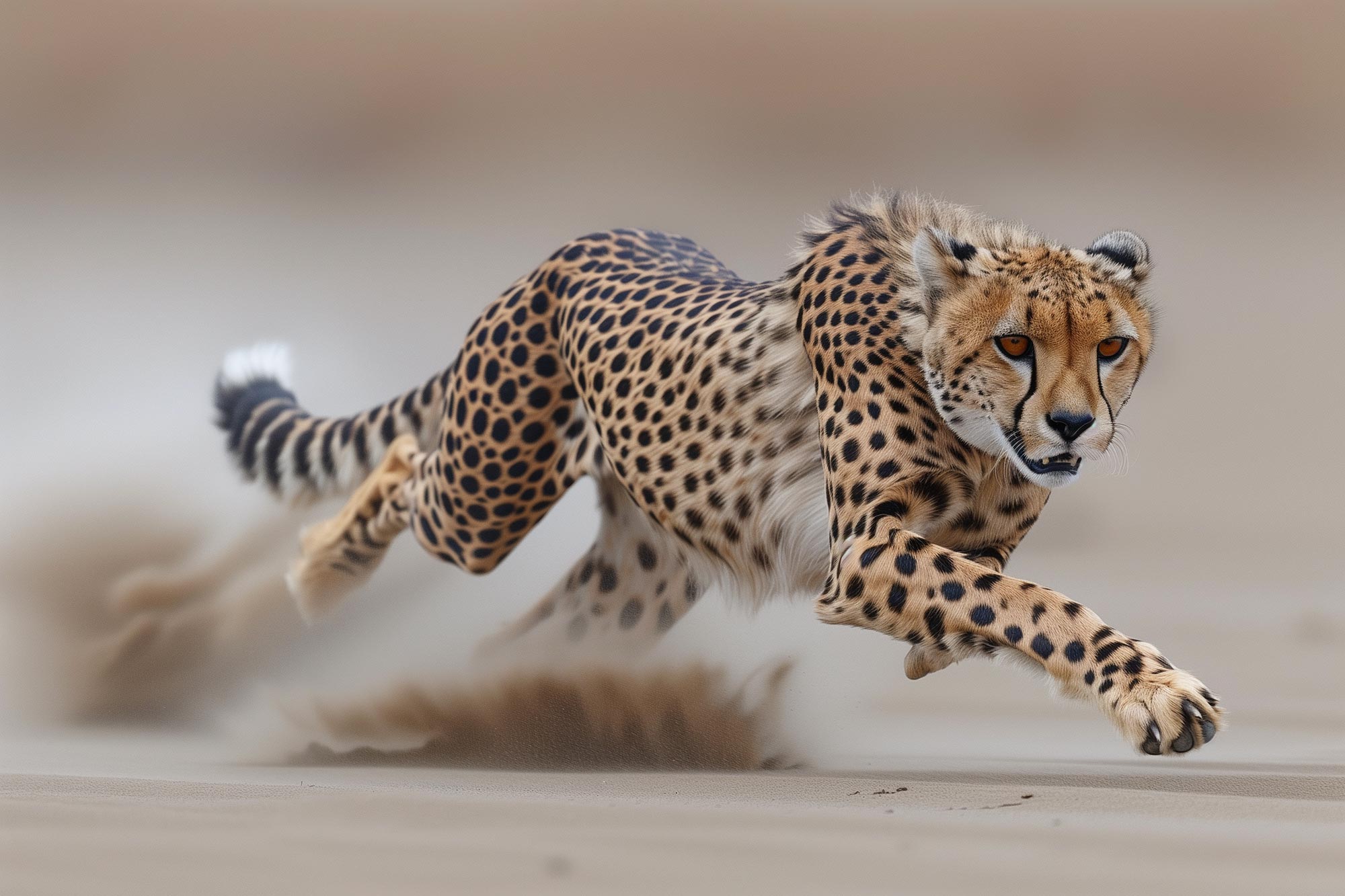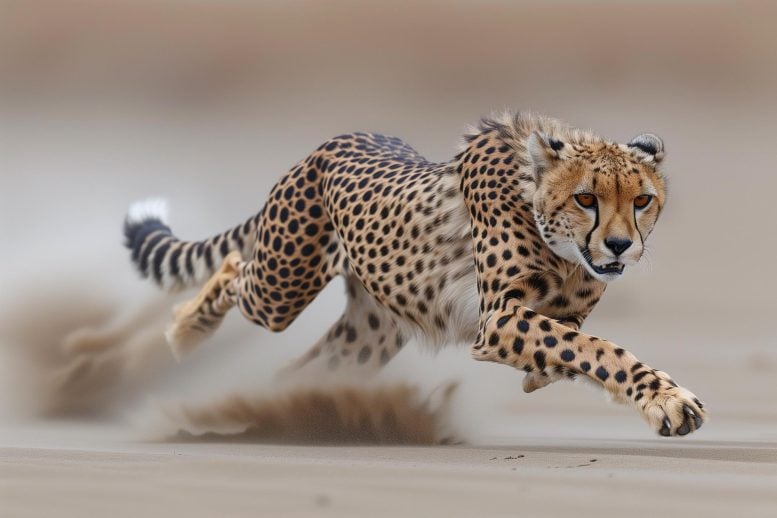

A team of researchers from institutions including Imperial College London and Harvard University found that maximum running speeds in animals are highest in medium-sized species due to limits on muscle contraction speed and extent, challenging previous notions of a single speed limit. Their study, revealing a dual constraint system involving kinetic energy capacity and work capacity limits, suggests animals around 50kg, like cheetahs, reach the highest speeds due to their physical “sweet spot.” Credit: SciTechDaily.com
An anomaly exists among the animal world’s physical characteristics. Although attributes like muscular power, appendage length, longevity, and brain mass generally scale upwards as an organism’s size increases, the maximum speed attainable while running peaks with creatures of moderate stature.
To explore why, an international team of researchers including Imperial, Harvard University, The University of Queensland, and The University of the Sunshine Coast, developed a physical model of how muscles, the universal animal motor, set limits on land animals’ top running speeds.
Lead author Dr David Labonte, from Imperial College London’s Department of Bioengineering, said: “The fastest animals are neither large elephants nor tiny ants, but intermediately sized, like cheetahs. Why does running speed break with the regular patterns that govern most other aspects of animal anatomy and performance?”
Their findings suggest that there is not one limit to maximum running speed, as previously thought, but two: how fast versus by how far, muscles contract. The maximum speed an animal can reach is determined by whichever limit is reached first – and that limit is dictated by an animal’s size.
Co-author Professor Christofer Clemente, from the University of the Sunshine Coast and The University of Queensland, said: “The key to our model is understanding that maximum running speed is constrained both by how fast muscles contract, as well as by how much they can shorten during a contraction.
“Animals about the size of a cheetah exist in a physical sweet spot at around 50kg, where these two limits coincide. These animals are consequently the fastest, reaching speeds of up to 65 miles per hour.”
The results are published in Nature Communications.
Testing the limits
The first limit, termed the ‘kinetic energy capacity limit’, suggests that the muscles of smaller animals are restrained by how quickly they can contract. Because small animals generate large forces relative to their weight, running for a small animal is a bit like trying to accelerate in a low gear when cycling downhill.
The second limit, called the ‘work capacity limit’, suggests that the muscles of larger animals are restrained by how far their muscles can contract. Because large animals are heavier, their muscles produce less force in relation to their weight, and running is more akin to trying to accelerate when cycling up a hill in a high gear.
Co-author Dr Peter Bishop from Harvard University said: “For large animals like rhinos or elephants, running might feel like lifting an enormous weight, because their muscles are relatively weaker and gravity demands a larger cost. As a result of both, animals eventually have to slow down as they get bigger.”
To test the accuracy of their model, the team compared its predictions to data on land animal speed and size collected from more than 400 species, from large mammals, birds, and lizards to tiny spiders and insects.
The model accurately predicted how maximum running speeds vary with body size for animals that differ by more than 10 orders of magnitude in body mass – from tiny 0.1-milligram mites to six-tonne elephants.
Their findings shed light on the physical principles behind how muscles evolved and could inform future designs for robots that match the athleticism of the best animal runners.
In addition to explaining how fast animals can run, the new model may also provide critical clues for understanding differences between groups of animals. Large reptiles, such as lizards and crocodiles, are generally smaller and slower than large mammals.
Co-author Dr Taylor Dick, from The University of Queensland, said: “One possible explanation for this may be that limb muscle is a smaller percentage of reptiles’ bodies, by weight, meaning that they hit the work limit at a smaller body weight, and thus have to remain small to move quickly.”
The model, combined with data from modern species, also predicted that land animals weighing heavier than 40 tonnes would be unable to move. The heaviest land mammal alive today is the African elephant at around 6.6 tonnes – yet some land dinosaurs, like the Patagotitan, likely weighed much more than 40 tonnes.
The researchers say this indicates that we should be cautious to estimate the muscular anatomy of extinct animals from data on non-extinct ones. Instead, they suggest the data indicates that extinct giants might have evolved unique muscular anatomies, which warrant more study.
The study raises questions on how massive dinosaurs managed to move, as well as questions that require more targeted data collection on specific animal groups, like in reptiles or spiders.
While the study looked only at land animals, the researchers will next apply their methods to animals who fly and swim.
Dr Labonte said: “Our study raises lots of interesting questions about the muscle physiology of both extinct animals and those that are alive today, including human athletes. Physical constraints affect swimming and flying animals as much as running animals – and unlocking these limits is next on our agenda.”
Reference: “Dynamic similarity and the peculiar allometry of maximum running speed” by David Labonte, Peter J. Bishop, Taylor J. M. Dick and Christofer J. Clemente, 11 March 2024, Nature Communications.
DOI: 10.1038/s41467-024-46269-w
This research was funded by the Australian Research Council, the Human Frontier Science Program, and the European Research Council (ERC) under the European Union’s Horizon 2020 research and innovation program.

